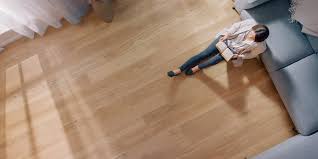Selecting the appropriate wooden floor (drevená podlaha) stain will significantly influence the look and life that your floor will last. If you’re planning to renovate your house or installing a brand new wooden floor, the right stain can enhance your natural appeal of wood while providing necessary protection. Here’s what you need to be aware of to make an informed decision.
1. Understanding Stain Types
Stains come in many types, including oil-based, water-based, and gel stains.
Oil-Based Stains: These are known for their deep, rich colors and durability. They penetrate well into wood providing excellent protection from the wear and tear. However, they take longer to dry and may be odorous. Oil-based stains also require mineral spirits for cleanup.
Water-Based Stains: These stains dry faster and are less prone to smell than oil-based alternatives. They have a more consistent color and are easy to clean up with soap and water. Stains made of water are also more environmentally friendly.
Gel Stains staining is thicker and can provide the most uniform color distribution for woods with different grain patterns. They’re ideal for those seeking more control over the staining process.
2. Choosing the Right Color
The stain’s color can drastically change the look of your space. When choosing a color, take into consideration the current decor and the mood you’d like to create. Light stains like oak or honey enhance natural wood tones, making spaces feel brighter and more open. Darker stainings like mahogany or espresso provide warmth and class however, they may make a room appear smaller.
3. Testing Samples
Always test the stain before committing to a color. Apply the samples to a small, unnoticeable area of the floor or a spare piece of wood to observe how the stain interacts with the wood’s natural grain and color. This can help you stay clear of unpleasant surprises, and make sure you’re happy with the final look.
4. Considering Wood Type
Different woods absorb stains in different ways. Hardwoods such as maple and oak will reveal the stain’s true grain and color, whereas softer woods like pine might absorb more stain, potentially resulting in a darker appearance. Always check how your specific wood reacts to stain.
5. Preparing the Surface
A well-prepared surface is essential to ensure a successful application of stain. The wood should be sanded thoroughly to remove any existing finish and smooth the surface. Ensure the wood is clean and dry prior to applying the stain. Any imperfections could affect the final result So, take your time to prepare the surface properly.
6. Applying the Stain
Follow the instructions provided by the manufacturer to apply. Apply the stain using rags, brushes, or other applicators that are suitable for the stain type. Apply the stain evenly and work in manageable sections to prevent streaks or overlaps. Make sure to allow enough drying time between coats, and consider applying a finish or sealer to protect stain-treated wood.
In short, picking the appropriate wooden floor stain involves understanding the various types of stain and choosing a shade that matches your decor, trying out samples, taking into consideration the type of wood you have, preparing the surface correctly and adhering to the application guidelines. Following these steps, you will get a gorgeous and durable finish that will enhance the beauty and natural appeal of wooden flooring.



